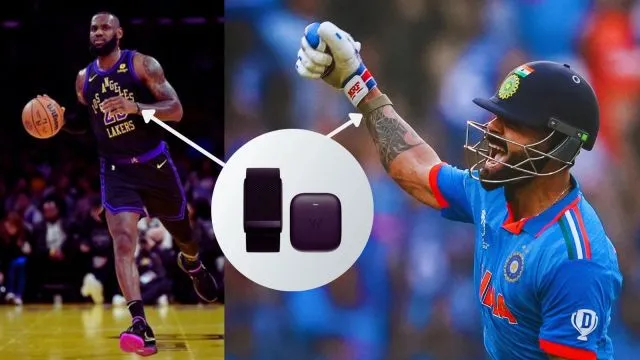Imagine a young cricketer, let’s call him Rahul, practicing his batting in a local cricket academy. Despite hours of diligent training, Rahul struggles to perfect his cover drive. His coach, recognising the potential but aware of the challenges in traditional training methods, decides to introduce a new approach. The coach uploads videos of Rahul’s practice sessions into a state-of-the-art AI system designed specifically for cricket training.
Within minutes, the AI analyses Rahul’s stance, swing, and follow-through, comparing them to thousands of successful cover drives played by professional cricketers. It identifies minute flaws that even the keenest human eye might miss and provides personalised feedback. Armed with these insights, Rahul adjusts his technique. Over the next few weeks, his cover drive transforms from a persistent weakness into a formidable strength.
This is not a scene from a sci-fi movie; it’s the reality of modern cricket training powered by artificial intelligence. AI has emerged as a game-changer, offering unprecedented opportunities to enhance player performance and training efficiency.
In this article we are going to talk on this same topic that is how “The future of Cricket Training is AI powered”.
The Role of AI in Modern Cricket Training
In the world of cricket, AI is transforming how players train and perform. Traditionally, cricket training relied on the experience and intuition of coaches and repetitive practice sessions. While these methods are still valuable, AI brings a level of precision and personalisation that was previously unattainable.
AI-driven tools analyze vast amounts of data from players’ performances, including video footage, biomechanical data, and physiological metrics like heart rate and muscle fatigue. By processing this data, AI provides detailed insights into every aspect of a player’s game.
For instance, AI can dissect a bowler’s action, identifying inefficiencies and potential injury risks. It can assess a batsman’s technique against various deliveries, suggesting tweaks to improve footwork or shot selection. Fielding strategies can be optimized by analyzing opponents’ batting patterns and predicting where they are most likely to hit the ball.
These insights are actionable recommendations that players can implement in their training routines, leading to significant improvements in performance.
Also Read : Semiconductor developers in India may earn triple the salary of software developers.
Enhancing Player Performance and Training Efficiency
One of the most significant benefits of AI in cricket training is its ability to enhance player performance and training efficiency. By leveraging machine learning algorithms and advanced analytics, AI systems can provide personalized training programs tailored to individual players’ strengths and weaknesses.
Smart wearables and sensors monitor a player’s movements during practice sessions, capturing data on their posture, balance, and technique. This data is analyzed to identify areas for improvement. Players receive real-time feedback, allowing them to make immediate adjustments. Over time, this continuous feedback loop helps players refine their skills and eliminate bad habits.
AI-powered simulation tools create virtual scenarios that mimic real match conditions. Players can practice their skills in a controlled environment, facing virtual bowlers that replicate the styles of their real-life counterparts. This helps players prepare for actual matches more effectively, as they can practice specific situations and strategies.
AI also helps in injury prevention and management. By analyzing a player’s biomechanics and workload, AI can predict the likelihood of injuries and recommend preventive measures. This proactive approach helps players avoid long-term injuries and ensures they can train consistently without setbacks.
Key Technologies and Tools Used in AI-Driven Cricket Training
Several technologies and tools are driving the AI revolution in cricket training. Here are some of the most notable ones:
1)Hawk-Eye Innovations: Hawk-Eye Innovations are known for their ball-tracking capabilities. They help in analyzing bowling techniques and track fielding positions.
2)PitchVision: PitchVision is one of the most widely used AI software programmes by coaches .This software provides real-time video analysis, allowing coaches to break down players’ movements frame by frame.
3)BatSense: BatSense is a smart sensor that gets attached to the bat and provides detailed insights into a batsman’s swing and shot efficiency.
4)Catapult Sports: Catapult sports are basically wearable sensors that track various metrics, such as speed, agility, and muscle activity, and provide real-time data to optimise training sessions. There are also alternatives to catapult sports like Whoop Band . You must have seen some kind of bandage worn by players like Virat Kohli ,Surya Kumar Yadav, and various other players . They are basically Whoop Band.

5)ProBatter Sports: ProBatter Sports is a virtual reality training tool that allows batsmen to practice against simulated bowlers in a controlled environment.
6)Hudl Technique: Hudl Technique is a video analysis software that uses AI to help coaches and players review and improve their techniques.
Success Stories and Real-World Examples
Several cricket teams and players have already started reaping the benefits of AI-driven training. For instance, the Australian cricket team uses AI to analyze players’ performances and develop personalized training programs. The system helps identify key areas for improvement and optimize training routines.
Indian cricketer Virat Kohli has used AI-powered tools to refine his batting technique. By analyzing his movements and comparing them with those of successful players, AI has helped Kohli make subtle adjustments that have enhanced his performance.
Various cricket academies around the world are adopting AI technologies to train young players, providing personalized coaching and helping budding cricketers develop their skills more effectively.
Conclusion
AI has revolutionized cricket training, bringing unprecedented precision and personalization to the sport. From enhancing player performance to preventing injuries, AI-driven tools and technologies are transforming how cricketers train and perform. As AI continues to evolve, its impact on cricket training will only become more profound, offering exciting possibilities for the future of the sport.
Discover more from WireUnwired Research
Subscribe to get the latest posts sent to your email.



